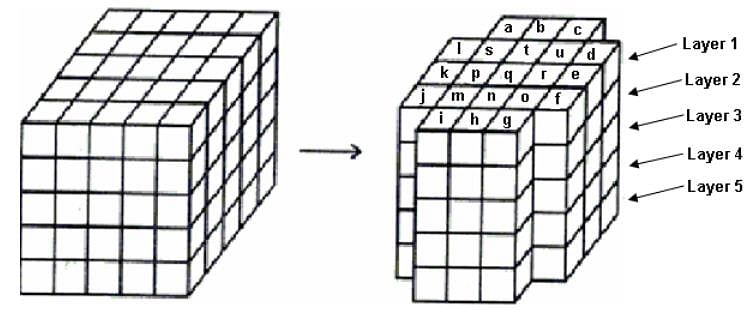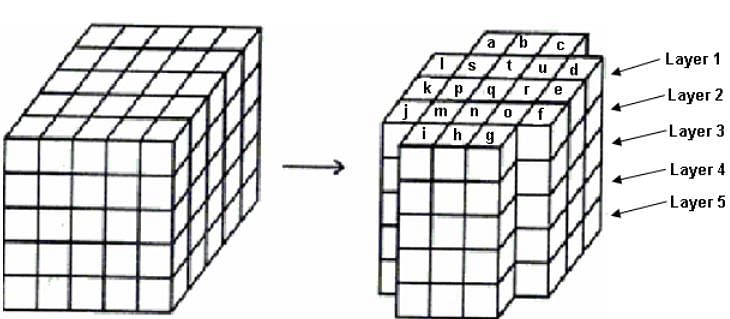Test: Cubes & Dices (February 21) - CAT MCQ
10 Questions MCQ Test - Test: Cubes & Dices (February 21)
Directions: Read the following information and answer the given question.
A cube is coloured red on all of its faces. It is then cut into 64 smaller cubes of equal size. The smaller cubes obtained are now separated.
Q. How many smaller cubes have no coloured face?
Directions: Read the following information and answer the given question.
A cube is coloured red on all of its faces. It is then cut into 64 smaller cubes of equal size. The smaller cubes so obtained are now separated.
Q. How many smaller cubes have only two surfaces painted with red colour?
| 1 Crore+ students have signed up on EduRev. Have you? Download the App |
Directions: One hundred and twenty five cubes of the same size are arranged in the form of a cube on a table. Then, a column of five cubes is removed from each of the four corners. All the exposed faces of the rest of the solid (except the face touching the table) are coloured red. Now, answer the question based on the above statements.
Q. How many small cubes are there in the solid after the removal of the columns?
Directions: Read the following information and answer the given question.
One hundred and twenty five cubes of the same size are arranged in the form of a cube on a table. Then, a column of five cubes is removed from each of the four corners. All the exposed faces of the rest of the solid (except the face touching the table) are coloured red.
Q. How many cubes have only one red face?
Directions: Read the following information and answer the given question.
A cube is painted red on two adjacent surfaces, black on the surface opposite to the red surfaces and green on the remaining faces. Now, the cube is cut into 64 smaller cubes of equal size.
Q. How many smaller cubes have only one surface painted?
Two orientations of a die are shown below. When number 2 is on the top, then which number is at the bottom?
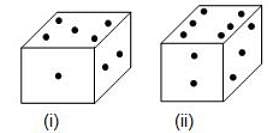
Two orientations of a dice are shown below. If the face with 1 dot is at the bottom, then how many dots will be at the top of the dice?
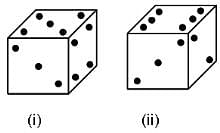
Two orientations of a block are shown below:
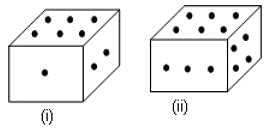
Q. When six is at the bottom, which number will be at the top?
In the given dice, a, b, c and d are written on the adjacent faces in a clockwise order, and e and f at the top and the bottom, respectively. When c is at the top, what will be at the bottom?
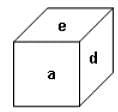
Directions: Six dice are shown in the following figure, the upper faces of each dice having been erased. The number of dots on each surface of every dice has been arranged in such a way that the sum of the number of dots on the opposite faces is 7.
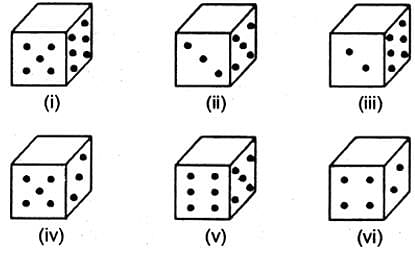
sum of the numbers on the top of first 3 dice


